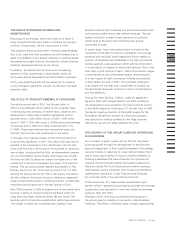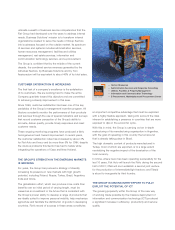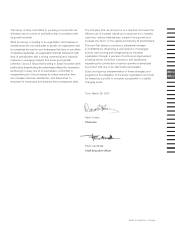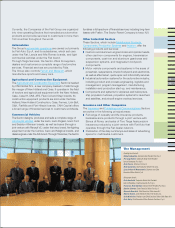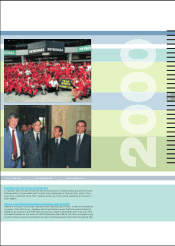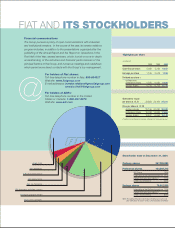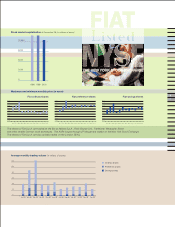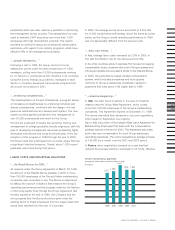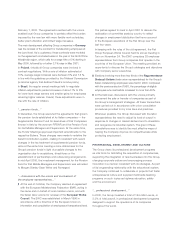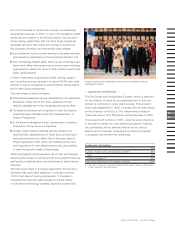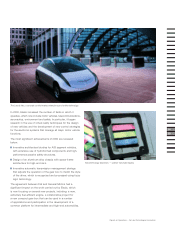Chrysler 2000 Annual Report Download - page 20
Download and view the complete annual report
Please find page 20 of the 2000 Chrysler annual report below. You can navigate through the pages in the report by either clicking on the pages listed below, or by using the keyword search tool below to find specific information within the annual report.
Fiat has a long tradition of supporting
cultural and scientific endeavors.
The Group’s effort in these fields are carried
out through Palazzo Grassi, a Group
company established for this purpose in
1984, which is located in a building with
the same name on the Grand Canal in
Venice.
The main cultural events of 2000 were:
❚The exhibition “Cosmos. From Goya
to de Chirico, from Friedrich to Kiefer
– Art in Search of Infinity” (March 26
– July 23), which was also conceived
to celebrate the transition to the new
millennium. Originally shown in a different
edition at Musée des Beaux-Arts,
in Montreal, Canada, the exhibition
presented about 400 works from more
than 150 museums and from a large
number of private collections in 18
countries worldwide.
❚The important exhibition on the
civilization and culture of the
Etruscans organized with the support
of the Italian Ministry of Cultural Assets
and Activities.
It was inaugurated on November 26, 2000
and will remain open until July 1, 2001.
It presents in a spectacular setting more
than 700 pieces from about 80 museums,
private collections and cultural institutions
in 13 countries worldwide.
Another important cultural and scientific
project supported by the Group is the automotive
engineering degree program created on
September 27, 1999 under an agreement
between Fiat and the Turin Politecnico University.
It is designed to train engineers who can not only
design vehicles and understand manufacturing
processes, but also have a comprehensive vision
of how an enterprise operates and interacts with
its markets and customers.
Accordingly, the curriculum is the product of
a close collaboration between educators and
business people, who provide at least 20%
of the instruction time. This program, which
combines theoretical teaching and practical
instruction, including 400 hours of internship
work in a corporate setting, started in the
1999/2000 school year with 60 students. The
following year, it reached the maximum of 120
students allowed under the agreement.


